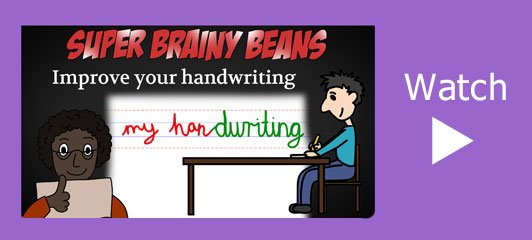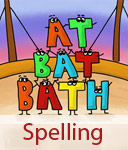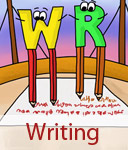

Handwriting worksheets
Year 3 & 4
Handwriting worksheets for Year 3 & 4 learning cursive writing in Primary School. Homework help with handwriting in KS2. Learn how to create neat handwriting.
Pick a level
Handwriting check
It's important to keep a check on your handwriting to check that it is neat and that people can read it. Let's do a check of your handwriting. Write the following sentence on a piece of lined paper:
A magic wand ... this was what Harry had been really looking forward to.
Now have a look at your writing and give yourself one point for everything that is right.
- All the letters are sitting on the line. - 1 point
- All the small letters are the same size. - 1 point.
- All the words and letters are spaced out evenly. - 1 point
- All the letters are slanted in the same direction. - 1 point
- The writing is joined up. - 1 point
- All the letters are the same style. - 1 point
- Someone else can read my writing. - 1 point
How did you do? Did you score 7/7? If you didn't don't worry, keep reading and we will go through how to make your writing look better.
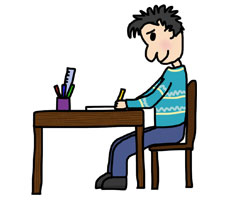
Seating position
Are you sitting comfortably? Ideally, your chair and table should be the correct height for you. You should be able to place your feet on the floor and the table should be at about elbow height. This makes a big difference to your handwriting. Have you tried writing on the floor while sitting on your knees? It's very awkward and hard to write neatly. So try and find somewhere you can writing that is perfect for you.
Paper position
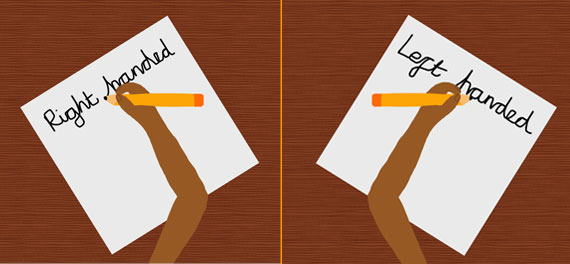
Paper should be placed on the table at a slight angle to the left or right depending if you are right or left-handed. This make your handwriting more upright and it's a much more natural way to position your hand and wrist. Try writing with the paper straight and then at a slight angle. Can you see the difference in your handwriting?
Sitting on the line

Sit your letters on the line for neater handwriting. Don't let the letters fly off the line like balloons.
Try sitting with the paper slanted to the right, if you are right-handed, or slanted left if you are left-handed. This will make it easier to keep your letters on the line.
Making the letters the same size

Are all your small letters the same size? Draw a line along the top of the small letters to see if they are. If you are having problems keeping your letters the same size then try writing on ruled paper with guidelines for a while until you become an expert at this.
Spacing

Letters and words should be evenly spaced. Letters in words should not have any big gaps or they could look like separate words. Learning cursive handwriting will help with this and it will teach you to join all the letters up in a word. Click here to have a go at cursive handwriting and start with the letters.
Leave enough space for a letter o between your words. See how many o's you can place in between your words. You only need to fit one in. So if can add lots of o's then make your gaps smaller.
If you more practice with this place lolly stick after your words so you can see where to write the next one.
Slanting

If your writing is slanted make sure it is always slanted in the same direction. Having your letter leaning different ways can make your writing harder to read. Having your paper slightly turned when you are writing may help you keep all the letters leaning the same way.
Joined up writing

Use joined-up writing. It will make your writing faster because you don't have to lift your pen so often and it looks neater. If you need more practice on forming the correct style of letters, have a go at our cursive letters worksheets.
Style of writing
Mixing different styles does not look good. Pick a style and stick to it. Check you are forming all your letters correctly. As you get older you will find your own style of handwriting. It maybe cursive (joined up) writing or it may not. Sometimes people write using a mixture of the two. But be careful, not joining certain letters can change the word, so it's misread as something else. Show your writing to someone else and see if they can read it. If they can't then maybe you need to work on your style so that others can read your writing.
Up until now, you have been taught to add lead in's for every letter, for neat handwriting leave out the lead in's at the beginning of words.

Handwriting practice
 Practice your handwriting every day to improve the look of your handwriting. If your handwriting needs improving in several areas try just changing one thing a week. Concentrating on improving one thing at a time makes it easier to remember.
Practice your handwriting every day to improve the look of your handwriting. If your handwriting needs improving in several areas try just changing one thing a week. Concentrating on improving one thing at a time makes it easier to remember.
Print off our blank guided paper and copy sentences from your favourite storybook or print off our handwriting worksheets to copy short paragraphs.
Print off your own blank handwriting paper to practice your handwriting.
Copy the short paragraph of text then us the checklist to see how well you have done. There are 12 sheets for plenty of practice.

